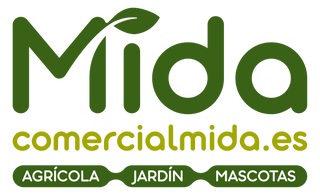When pests invade our home... What do we do?
household pests They are a common problem in homes, mainly at certain times of the year. With their presence, people's health can be at risk. There are several factors that contribute to the appearance of pests in the home:
-
Humidity: It is the most important factor in the appearance of domestic pests, since they like humid places and with little light.
- Dirt.
-
No ventilation: poorly ventilated places are conducive to the development of pests.
-
Easily accessible places, without barriers that prevent the entry of pests.
To be able to fight pests that invade homes, you must first identify which ones are present.
|
MOST COMMON DOMESTIC PESTS
|
|
Mites
|
They are a subclass of arachnids, very small in size. They are found in mattresses, sofas, bedding, etc. They feed on blood, sebaceous secretions, skin flakes, hair and nails.
|
|
moths
|
They belong to the order Lepidoptera. They feed on textiles, dry food and other stored products.
|
|
Cockroaches
|
They belong to the Blattodea order and are omnivorous, although domestic species consume any type of edible substance.
|
|
Fleas and ticks
|
Pets are their hosts. They feed on blood (they are hematophagous) and can transmit diseases.
|
|
wasps
|
They belong to the order Hymenoptera. They feed on nectar and other immobilized insects.
|
|
rodents
|
They belong to the order Rodentia. They are mostly herbivorous
|
|
flies and mosquitoes
|
Flies and mosquitoes belong to the order Diptera. Flies feed on organic debris, food, and animal fecal matter. Female mosquitoes are hematophagous, and males feed on nectar, decaying matter, and plant fluids.
|
|
Ants
|
They belong to the order Hymenopetera and are omnivores.
|
|
Birds
|
They feed on nectar, plants, fruits, seeds, decomposing animals and animals smaller than themselves.
|
Once the presence of a pest in the home is detected, a control plan must be followed, which consists of four phases:
-
ID. The correct identification of the pest to be treated is very important since its biology determines the control method to be used.
-
Planning. Once the pest is identified, it is time to choose the type of control to use. The most beneficial application method and active ingredient must be selected.
Execution. It consists of the application of control measures.
-
Application evaluation. Stage in which the results of the control measure used are evaluated.
-
Tracing. Despite the fact that control measures in many cases have a residual effect, the evolution of the pest must be evaluated in order to apply, if appropriate, relevant maintenance measures.
The control methods to be used can be chemical, physical or biological. For physical and chemical control there are specific products for each type of pest.
MIDA TRADE COUNCIL
The correct choice of the product to be used allows a faster control (given by the aforementioned specificity), effective (we will obtain the desired objective of eliminating the pest) and more economical (by selecting a specific product we will reduce the number of applications, which will generate a saving).
¿You need pest control products Visit our section household pesticides.

